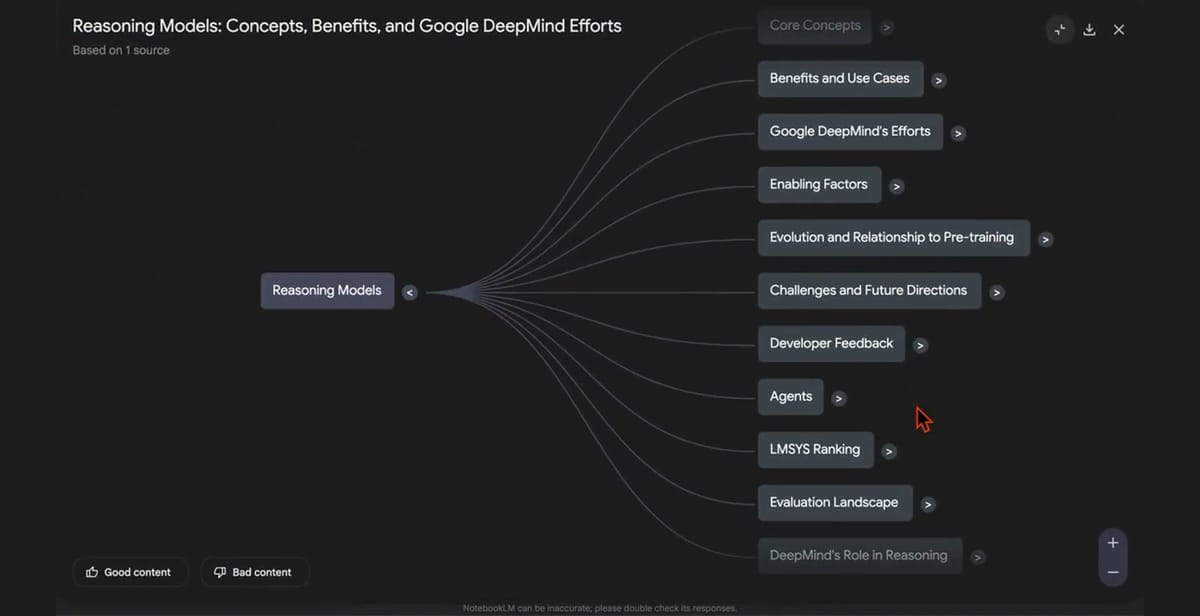
In a quiet but significant update to its AI-powered study assistant, Google has added interactive Mind Maps to NotebookLM, enhancing the tool's ability to help users visualy navigate complex information and discover relationships between concepts in their documents.
Key Points:
- Mind Maps visually represent document topics as interactive branching diagrams
- Users can explore connections, ask questions about specific topics by clicking on nodes
- Feature is rolling out gradually to NotebookLM and NotebookLM Plus users across 180+ regions
🛳️Rolling out interactive Mindmaps in NotebookLM!
— Simon (@tokumin) March 19, 2025
I'm so inspired by the Exploratorium here in SF - What if every notebook generated your own personal set of interactive understanding toys that help you learn through play? What if instead of text or images, Notebook could even… pic.twitter.com/fFJCGrv0kc
The new Mind Maps feature, announced as part of a broader update to NotebookLM, significantly changes how users can interact with their uploaded content. Rather than simply reading through documents linearly, users can now see a visual representation of key topics and their interconnections as a branching diagram.
For students and researchers drowning in information, this visual approach could be game-changing. A biology student working on a thesis about coral reef ecosystem decline, for instance, could upload relevant research papers and immediately see a mind map breaking down key factors like ocean acidification, rising sea temperatures, pollution, and overfishing.
The generated mind maps are fully interactive. You can zoom in and out, expand or collapse branches to focus on specific areas, and even click directly on nodes to ask NotebookLM questions about that specific topic. This contextual question-answering keeps users within their information framework while allowing deeper exploration.
The rollout is part of Google's continued investment in NotebookLM, which has become increasingly popular among students and researchers for its ability to generate study guides, summarize documents, and even create AI podcasts from user-provided sources – all while maintaining better factual accuracy than many competing AI tools.
Along with mind maps, 2Google has also added a language selector for generated text, allowing study guides, briefing documents, and chat responses to be generated in any of the 35+ supported languages.
As AI study tools proliferate, Google's addition of visual knowledge mapping to NotebookLM represents a thoughtful expansion beyond simple text generation – potentially helping users not just consume information but better understand how concepts relate in their field of study.

